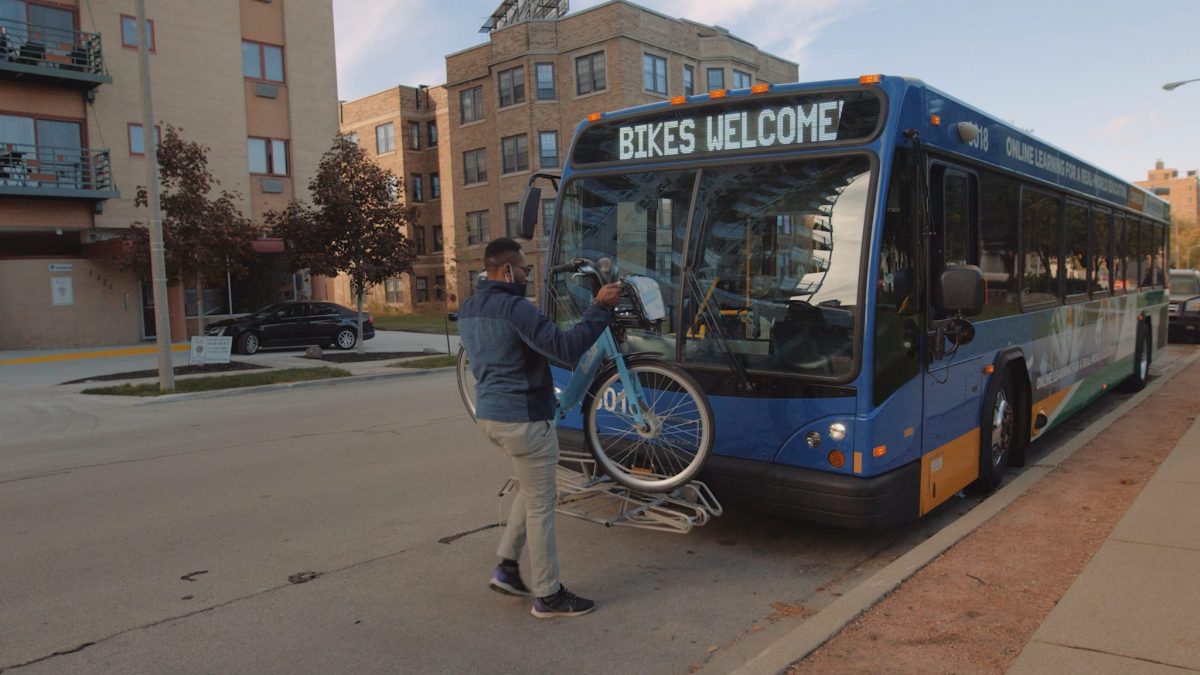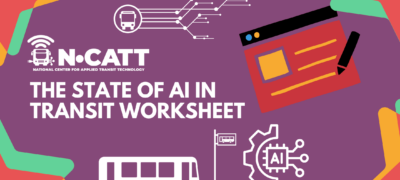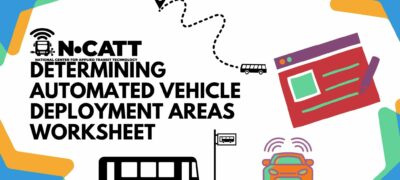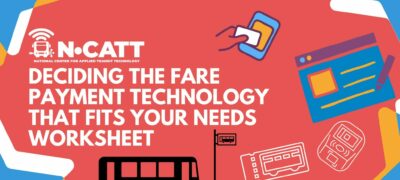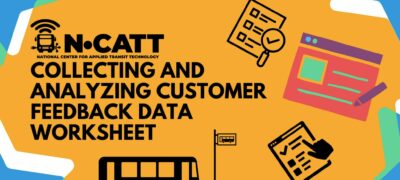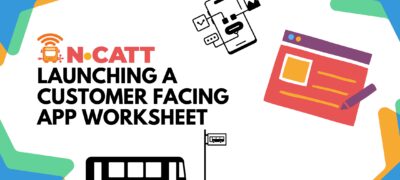Strategic visits with other transit systems allow planners time to understand the operating environment, transit technologies and multi-modal connections first-hand. This experience can help transit agencies understand potential replicable solutions before dedicating resources toward a solution.
This guide is meant to help transit agencies plan and execute strategic visits and learn directly from industry colleagues.
Pre-Visit Preparation
Establish Goals
First, make a list of the goals for your site visit. Since you are taking time away from both your agency and the host, it is critical to establish goals for the visit.
Example 1
Our dispatch process is a constant challenge, we would like to experience how dispatch software can make service delivery more efficient.
Example 2
Our agency believes mobility on demand service could be replicated in our service area but we want to understand how the service works for passengers and agency staff before we dedicate resources to the planning transition.
Example 3
Our buses struggle to integrate with other modes and we want to understand how another system has improved the multi-modal transitions in their area.
Identify a Host Agency
Transit agencies differ in size, service type(s), geography, resources and more. Ideally, find an agency that has similar characteristics as yours but offers ‘things’ you’d like to understand and learn about first-hand.
Confirm your visit with the host agency and research the geography, service type(s) and operating environment.
- Review documents from the agency’s website, local newspapers, or from town and county government websites.
- Visualize service area through Apple, Google or another mapping tool. For instance, Measure the drive time between key towns/cities, identify geographic barriers such as lakes, mountains, deserts, understand jurisdictional boundaries, road networks, and other constraints that factor into the daily operating environment.
- Compare transit profiles on the National Transit Database (NTD) to contextualize the operating environment of the host agency.
- It will be important find comparable communities to yours!
A few things to remember for your visit
- Ask first, but take photos and notes!
- Be a courteous visitor, remember, the agency is taking their time to help you!
- Be curious and ask respectful questions.
- Enjoy your visit!
Administration Department
- Introduce team members and review the goals of your visit with the host agency staff.
- Ask about the agency’s history, how their services were established, why and how they have evolved and where they may be heading.
- Staffing: size and respective roles, are there staffing challenges or key staff that make certain processes possible?
- What are their funding sources?
- At a high-level, discuss the technology deployed at the agency and who manages it.
Planning Department
- Understand staffing structure and responsibilities.
- How are plans developed, funded and implemented?
- How often are plans updated, and by whom?
- How does data inform planning and decision making?
- What technologies are used, how and by whom?
Information and Technology Department
- Understand staffing structure and responsibilities.
- What technology is deployed for various activities?
- How is technology training facilitated, how often, and by whom?
- How are system upgrades, and maintenance facilitated?
- How are technology solutions procured and implemented?
Operations Department
- Understand staffing structure and responsibilities.
- What service types are operated by the transit agency?
- Service characteristics; headways, frequency and delivery characteristics.
- Fleet characteristics; size, type, fuel source, deployment assignments.
- What technology is used, by whom, benefits and limitations of the system?
Dispatch Department
- Understand staffing structure and responsibilities.
- Review dispatch workflow, restrictions, challenges, scalability, efficiency gaps.
- What technology is used, by whom, cost and funding structure. What are the benefits and limitations to the technology?
- Are there plans to improve the technology and how is that being achieved?
Outreach and Marketing Department
- Understand staffing structure and responsibilities.
- Does the agency use advisory councils or subcommittees to support outreach activities?
- How does the agency engage with varying stakeholders?
- Limited English Proficiency (LEP) Populations
- Marginalized groups
- Community partners
- Government officials
- Business community
- How is feedback from the community incorporated into planning and service delivery?
- What activities does the agency facilitate to increase engagement, awareness and ridership?
- Is technology used to support these activities?
Explore the multi-modal connections!
- Ride the bus, van, rail, etc. and experience the system.
- Identify areas in the network where modes intersect. Possible locations are transit stations, or adjacent bus stops on different routes within walking or biking distance.
- All trips begin and end as a pedestrian, it is important to walk or wheel the connection to experience it first-hand.
- Is it easy to navigate?
- How frequent are the headways? Are you rushed from one connection to the other?
- Is the built environment safe and conducive to pedestrians, wheelers, cyclists?
- Compare the transit utilization rates in the area. Is it transit or car-oriented?
- How does technology support the multi-modal connections along the system?
- Download the system app(s), if there is one.
- Are there on-board announcements? Are they loud and clear?
- How are fares processed?
- On-platform, on-board, fare-free?
- Cash, smart-phone app, credit card?
- Do they integrate into public benefits and other discount structures?
- Navigate the wayfinding and system information.
- Compare the information at system shelters, stops, on the bus/rail.
- Is it simple and easy to navigate?
- Are stops and information presented in compliance with the ADA? Multi-lingual?
- Speak with riders and users of the system to hear directly from them.
- Remember you are a rider too, are you experiencing the system in similar or different ways?
- Speak with operators, if they are between shifts. Does the technology work as intended, are passengers challenged by the system design, route structure, or paying fares? What do they see?
Post Site Visit
- Compile your notes and photos to reflect on the visit
- Were your goals achieved during the visit?
- Are there opportunities, or ideas that you would like to investigate?
- Remember to thank your host for their time!
